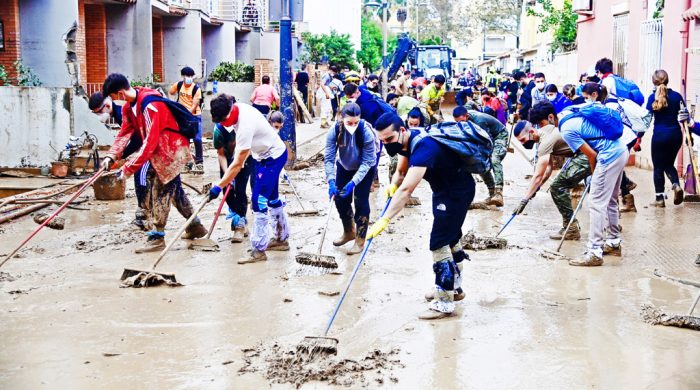Myanmar’s landmine clearers working with pliers, bare hands

- Update Time : Thursday, August 31, 2023
- 34 Time View

Six men prod and poke at dense undergrowth in eastern Myanmar with rakes and hoes — not farmers, but a rebel unit clearing deadly landmines from the war raging between the junta and pro-democracy fighters.
A mine is spotted and one man lifts a mud-caked, palm-sized device from the earth with his bare hands and passes it to a comrade who deactivates it — with an ordinary pair of pliers.
The shoestring deminers are scouring the hills and fields of Kayah state on the border with Thailand — a hotbed of resistance to the Myanmar military’s 2021 coup.
More than 100,000 people have been displaced there, according to the United Nations, and those trying to return home do so at the peril of mines retreating fighters leave behind.
‘The areas we need to clear are very wide and we have to use many soldiers to clear the mines,’ Sin Phyu, from the anti-junta Karenni Nationalities Defence Force (KNDF), told AFP.
‘Even if we could afford to buy a mine detector it would still not be enough for this operation… We just work slowly with the equipment we have.’
The KNDF is one of dozens of groups battling to restore democracy in Myanmar after the military deposed Aung San Suu Kyi’s government.
The rebel groups have caught the army off-guard with their effectiveness, analysts say — despite being forced to rely on weapons captured from the military, bought on the black market or manufactured in highly dangerous makeshift arms factories hidden in the jungle.
But despite efforts to clear them, landmines are taking a cruel toll on civilians.
Hla Win, 34, had been living in a displacement camp in Pekon township in neighbouring Shan state after fighting broke out near her village.
In June, with the rainy season underway, she set off for her village with three friends to fetch blankets to protect against the cold in the camp.
Before she reached home she stepped on a mine.
‘My body jumped up and down suddenly,’ she told AFP from the tent she lives in with her child.
‘I didn’t feel anything on my leg because of the shock. But I saw my leg was missing.’
She spent the next 13 days in a hospital where doctors amputated her maimed leg, and now she relies on a crutch to get about.
‘I’m angry with myself when I can’t go out like other people,’ she told AFP.
‘My mind tells me I want to go somewhere but my body can’t.’
Myanmar is not a signatory to the United Nations convention against anti-personnel mines.
Last year Amnesty International said Myanmar junta troops were laying landmines on a ‘massive scale’ around villages where they are battling anti-coup fighters.
When junta troops have been pushed back from an area, Sin Phyu’s team go on patrol, clearing undergrowth to detect mines hidden beneath.
‘We give priority to demining because then the villagers can do agriculture and can live in their villages,’ the bespectacled 31-year-old said.
His team typically find between 60 and 70 mines each month, mostly of the M14 variety first deployed by the United States in the 1950s.
The KNDF plants mines too, Sin said, although only to guard their bases and at battlefield areas.
He added that the KNDF also warns villagers not to rush home after junta troops have withdrawn from areas around their villages until they have been declared safe.
Former KNDF fighter Joseph also lost his leg after stepping on a mine during a clash with the military in Kayah in January last year.
The 19-year-old received medical treatment in time, unlike other comrades who he says have bled to death after being hit.
Eight months later he received a prosthetic leg and can now manage riding a motorbike to get around. He can no longer fight at the front, and works instead for a pro-democracy radio station.
But he struggles with trauma.
‘I have had depression since this injury. Sometimes I wanted to harm myself and thought about taking my own life,’ he said.
The KNDF has not published figures for how many of its fighters have been wounded or killed by landmines.
In February the UN said landmines and unexploded munitions injured or killed more than one person every day in Myanmar last year.
‘There will be more landmines to be found’ across Kayah’s war-ravaged landscape, says Sin.
In the displacement camp with her child, Hla Min is still hoping to receive a prosthetic limb.
‘I think it’s my fate that this happened to me,’ she said.
‘There were many people who had walked on this road but I was the one who stepped on a landmine.’

























